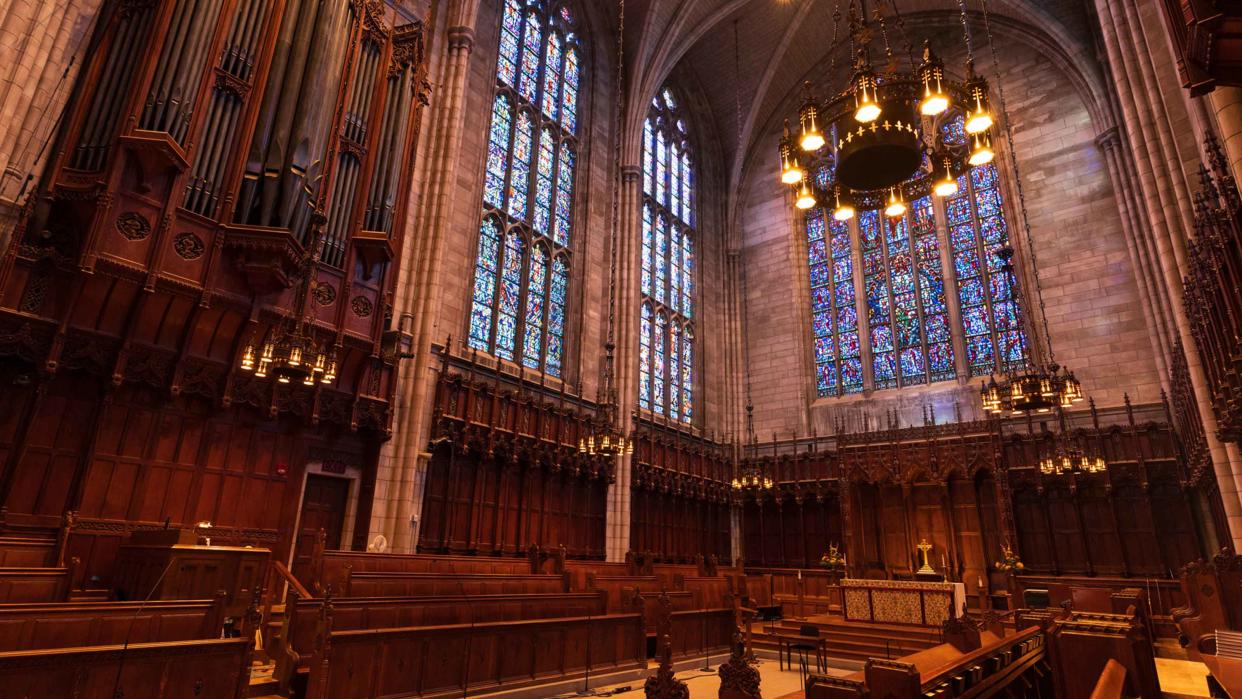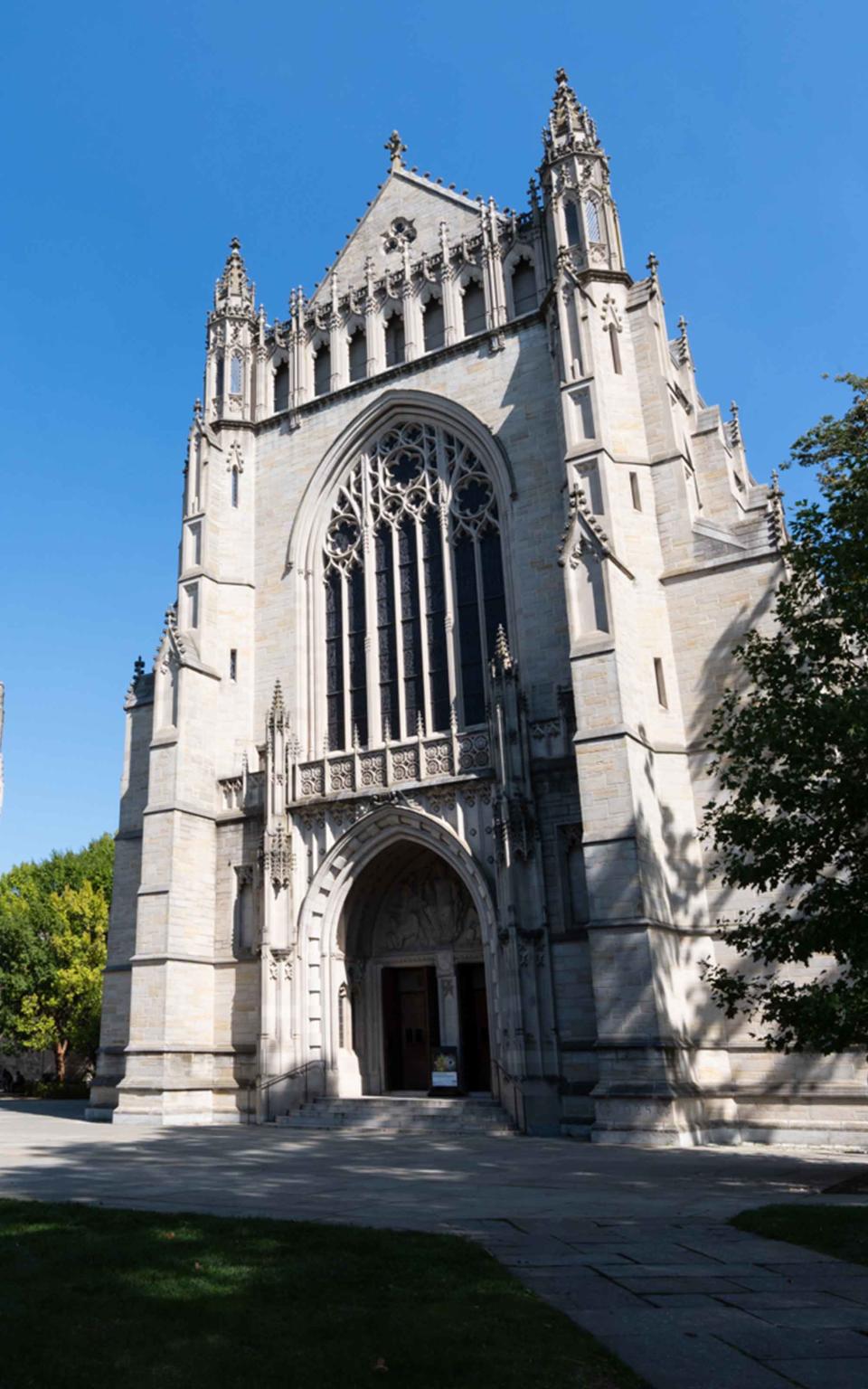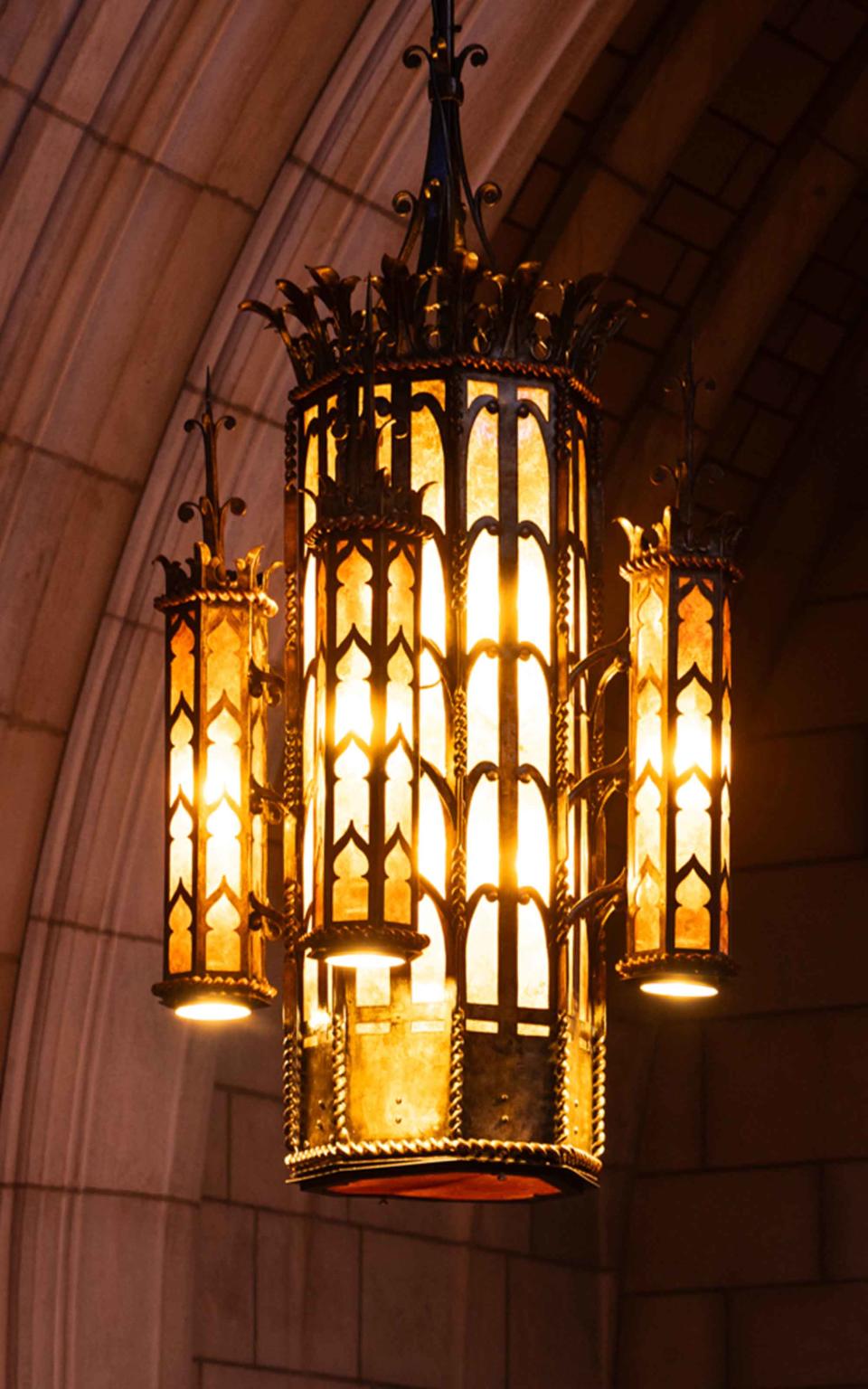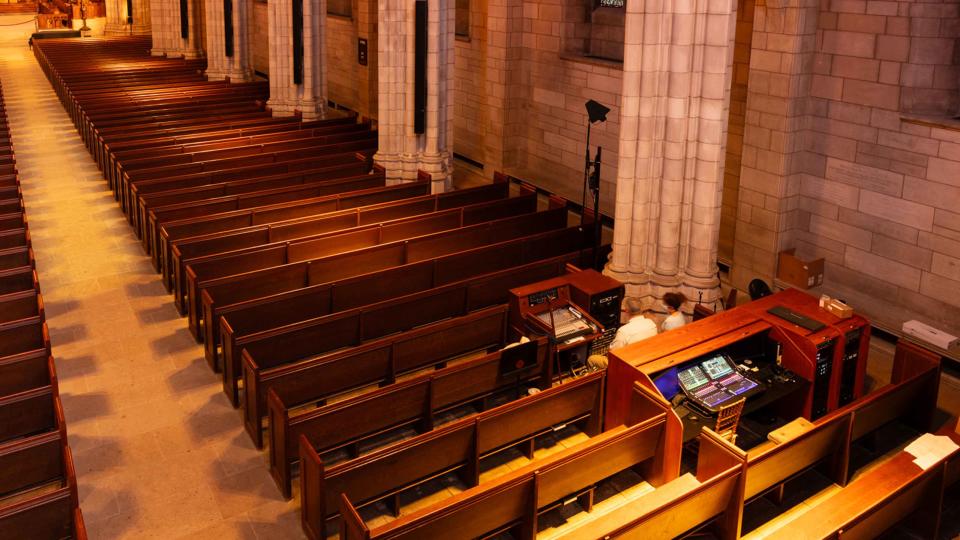Historic Chapel, Modern Sound

Designed in Collegiate Gothic style, Princeton University Chapel in Princeton, NJ, is believed to be one of the largest university chapels in the world. Visitors to the chapel come for worship, weddings, and musical performances, enjoying an aesthetic that reminds them of days of yore.
Unfortunately, so did the audio system.
Washington Professional Systems, which installed the existing sound system in the 1990s, was called upon once again to modernize the Princeton Chapel audio system with technology set for the future—all while keeping the integrity of the university's house of worship entering its 96th year of service.
Let There Be Sound

The Princeton Chapel is not simply a historic house of worship, but an elaborately decorated one, with high-arching ceilings, ornate stained-glass windows, and a pipe organ. As John Fish, WPS senior engineer, recalled, the challenging installation required a complex system.
Project engineering began in December 2022, with the installation starting in April 2023. The project was complete in September 2023, though WPS provided some fine tuning throughout October. That's quite impressive, considering the chapel remained in use throughout the project. Per Fish, all work had to cease during services, but could continue in a quiet manner during organ and choir rehearsals.
WPS had the advantage of understanding the old system, which the company installed in the 1990s (and was designed by Acentech). "It was a combination of custom pew-back speakers in the transept and custom-tapered nine-element column arrays throughout the nave," Fish explained. "That the system lasted for 30 years is a tribute to its successful implementation—but within the last decade, the system’s performance certainly suffered from the age of its components."
[The Integration Guide to House of Worship 2023]
The new system, designed by Sam Berkow of SIA Acoustics, includes a wide array of Pro AV solutions. As Fish explained, it uses more than a dozen Renkus-Heinz Iconyx digitally steerable line arrays.
"For the purpose of delivering highly intelligible voice lift, the design could have stopped there," Fish said. "But the system design went on to provide a means to support the extensive use of the space as a performance venue. This was accomplished with the use of 24 Fulcrum Acoustic 5 and 8-inch coaxial speakers mounted within the newly refurbished chandeliers.

"These speakers had the effect of wrapping the listener with music, creating a concert hall like experience for choral and orchestral music," he continued. "These two speaker systems combined to provide very musical and accurate lift and playback of musical performances while simultaneously allowing for highly intelligible speech lift."
Also in use is an Allen & Heath Avantis digital mixing console and Dante-based network, plus a Clear-Com communication system, Listen Technologies systems for assisted listening, Shure wireless microphone system, and additional mics from DPA, Earthworks, and Audix.
Chapel-Sized Challenges
According to Fish, the single greatest challenge was matching the right speaker system to the acoustic space, but there were several other challenges that existed simply because of the age and architectural complexities of Princeton Chapel. The building itself has a cruciform shape and a 65-foot vaulted ceiling, which made cabling a great challenge.

"The speakers in the chandeliers were fed from speaker cables that were integrated into the support chains leading into termination cabinets in the attic space," he explained. "They were then routed from the termination cabinets to a tower that ran from the attic to the basement. In the basement, the speaker cables were run in cable tray to the new audio rack location. Each of the 24 chandelier speakers had its own 12-gauge cable that led to three QSC CX-Q 4K8 8-channel amplifiers."
Remember those Renkus-Heinz speakers? Network audio distribution to the speakers was handled using individual home runs of 12-core, single-mode fiber leading down to the new audio rack location. Fish said four of the cores were used for Dante primary and secondary circuiting, while the remaining eight cores are for future implementation of a distributed video system.
[Blaze Audio Solves Challenges of Contemporary Worship Services]
Other challenges included mounting. The chandeliers were renovated with LED lights and had to be lowered, removed, and hoisted back into place once upgraded, making installation of the Fulcrum Acoustic speakers a challenge in both function and time. The architecture made the installation of other speakers tricky as well.
"Mounting of the Iconyx speakers onto the structural columns was especially difficult given that there was not a flat surface to be utilized on any of the columns," Fish noted. "This was made even more difficult given the edict that there was to be no penetration into the stone. Unique brackets, customized for each column, were positioned in the concave space created where two cylindrical details on the columns met. Once the brackets were in place, a vertical custom steel assembly was installed onto the brackets, providing a flat surface onto which the Iconyx columns were mounted."
“Of greatest importance is listening to everyone who is involved. Great ideas and solutions are not the exclusive domain of architects, designers, and engineers. Simple comments from the loftiest executive to the humblest worker can lead to the best solution.”
While the architecture proved challenging, keeping the integrity of that historic pipe organ was essential. "The prime directive for the pipe organ was ‘do no harm,’” said Fish. “Since the pipe organ relies on the acoustics of the chapel, it is sometimes hard to ascertain where the instrument stops and the building begins. There was a small amount of acoustic treatment, designed by SIA Acoustics, put onto the south walls of the transept to control a spectral reflection back into the chancel area. An interesting footnote is that the fabric covering the treatment was printed with a high-resolution image of the stone wall onto which it was installed.
“While there was no real design consideration of the audio system related to the pipe organ, the DPA ST4011C recording mics are positioned to pick up the pipe organ for recording,” Fish added.
Ready for Service
One of the keys of the new sound system was ensuring ease of use. Clergy and staff had to be able to pick up on things relatively quickly to get the right aural tone. WPS installed the system with a “non-operator” mode to simplify the process and allow everyone involved to utilize the audio system for services.
“Multiple presets are accessible on a touchpanel located under the pulpit,” explained Fish.” Each one recalls a unique configuration of the system for each denomination and various weekly events at the chapel’s main altar and the altar in the Marquand Chapel. The 'non-operator' mode is designed to allow for the use of the fixed microphones and certain wireless microphones for voice lift.”

The pandemic changed the way people do so many things, and that includes in-person services. The sound system was designed with three modes for broadcasting and streaming. Additionally, there is a rack with an Apple Mac Pro running Avid Pro Tools with four Focusrite RedNet HD32R interfaces for broadcasting. Using the fiber backbone of the system, the rack allows for 128 channels of recording.
The user-friendly design of the sound system has been well-received by both the parishioners and visitors, as well as the Princeton Chapel staff. With advanced capabilities and future-proofed solutions, Princeton Chapel is set for enhanced and crystal-clear auditory experiences for—like its predecessor—another 30 years or more.
“In historic spaces at Princeton University, every alteration must be run through an extensive review process involving Princeton’s architectural team, Princeton’s project management team, the chapel’s operational staff, the audio design consultants, the general contractor, the electrical contractor, and WPS’ project team,” Fish said. “Of greatest importance is listening to everyone who is involved. Great ideas and solutions are not the exclusive domain of architects, designers, and engineers. Simple comments from the loftiest executive to the humblest worker can lead to the best solution.”
[Top Integrators 2023: Challenges for 2024]
"I’ve only heard very positive things," said Rev. Alison L. Boden, Ph.D., dean of religious life and of the chapel, Princeton University. "People can decipher our words and hear music in an appropriately blended way. People who formerly needed assisted hearing devices from the chapel don’t need them anymore. It is much easier to hear what is being said at the lectern and pulpit when you are in the chancel.”
"The chapel lighting restoration and sound system replacement project was a complex project that required attention to detail and collaboration with the design team and client throughout construction, system startup, and turnover," added Alexis Mutschler, assistant director of special projects at Princeton. "WPS was a team player and always prepared with an alternative solution or suggestion on how to better the system to give the university the best sound possible."

